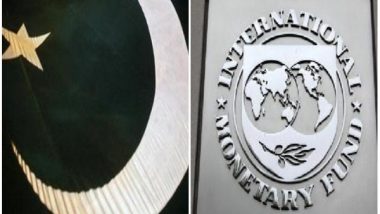Islamabad [Pakistan], November 25 (ANI): The Pakistani government has decided to implement a phased approach for the ongoing Public Sector Development Programme (PSDP) over three years, aiming to ensure the timely completion of high-priority projects and meet the International Monetary Fund (IMF) requirements, the Dawn reported on Monday.
This decision is part of a broader strategy to reduce the current Rs 9 trillion development portfolio under the USD 7 billion Extended Fund Facility (EFF) provided by the IMF. A meeting chaired by Pakistan's Planning Minister Ahsan Iqbal last week outlined a path forward, stating that at the current pace, the PSDP would take over 14 years to complete, the Dawn reported, citing sources.
It was agreed that the IMF-imposed conditions would be the starting point for a "one-time review" of all technically approved projects, with the goal of narrowing down the active projects to high-priority ones that can be finished promptly. Additionally, it was decided to increase the frequency of reviews from biannual to quarterly for this year's PSDP, and a strategy will be developed to introduce new projects in the upcoming fiscal year aligned with the current government's priorities, the Dawn reported.
As part of the IMF agreement, the government is required to submit a report detailing the results of the PSDP review.
Also Read | Indonesia Floods: 13 Killed, 18 Injured As Landslides and Flash Floods Hit North Sumatra.
The meeting revealed that 1,071 development projects are included in this year's federal PSDP, but only 105 of them are nearing completion, with 80 per cent or more progress. These projects have been allocated Rs 37 billion this year. The portfolio also includes 85 foreign-funded projects totaling Rs 260 billion.
The meeting noted that the PSDP for the current year required Rs 2.053 trillion based on demand from various ministries, but only Rs 1.4 trillion was initially allocated in the budget, later reduced to Rs 1.1 trillion to meet IMF requirements. The demand for the next fiscal year is estimated at Rs 2.1 trillion, with Rs 1.5 trillion expected in fiscal year 2027.
So far, spending has been slow, with only 9 ministries using between 11 per cent and 18 per cent of their allocated funds in the first five months, while some ministries reported zero spending. As of November 20, the PSDP utilization stood at Rs 92 billion, or 8 per cent of the revised budget allocation of Rs 1.1 trillion, significantly lower than last year's Rs 117 billion (13 per cent of the annual allocation).
To improve spending, the Ministry of Finance has established a release mechanism, recommending that 15 per cent of the allocation be released in the first quarter, followed by 20 per cent in the second quarter, 25 per cent in the third, and the remaining 40 per cent in the final quarter, as reported by Dawn. This year's utilization is considerably lower than the expected 26 per cent release by November 20.
As part of the IMF program, the Planning Commission has introduced criteria for selecting and financing future projects. These projects must be economically and financially viable, considering the current balance of payments challenges. The IMF has also set a structural benchmark for January 2025, requiring the government to publish criteria for project selection and introduce a limit on the size of new projects entering the PSDP.
The IMF's recommendations also include significant public financial management reforms to improve budget discipline, enhance transparency, and build confidence in the spending process. This includes producing quarterly reports comparing budget projections with actual spending and conducting a one-time review to prioritize ongoing and approved PSDP projects. (ANI)
(This is an unedited and auto-generated story from Syndicated News feed, LatestLY Staff may not have modified or edited the content body)













 Quickly
Quickly









 GT
GT







